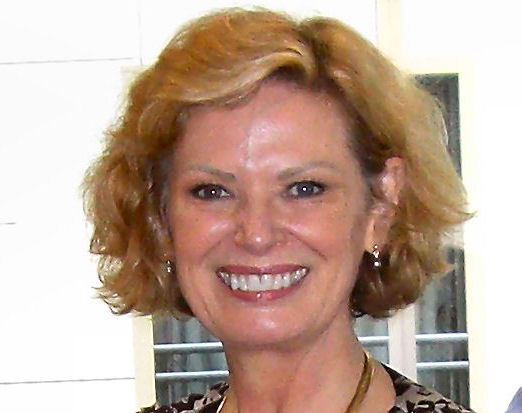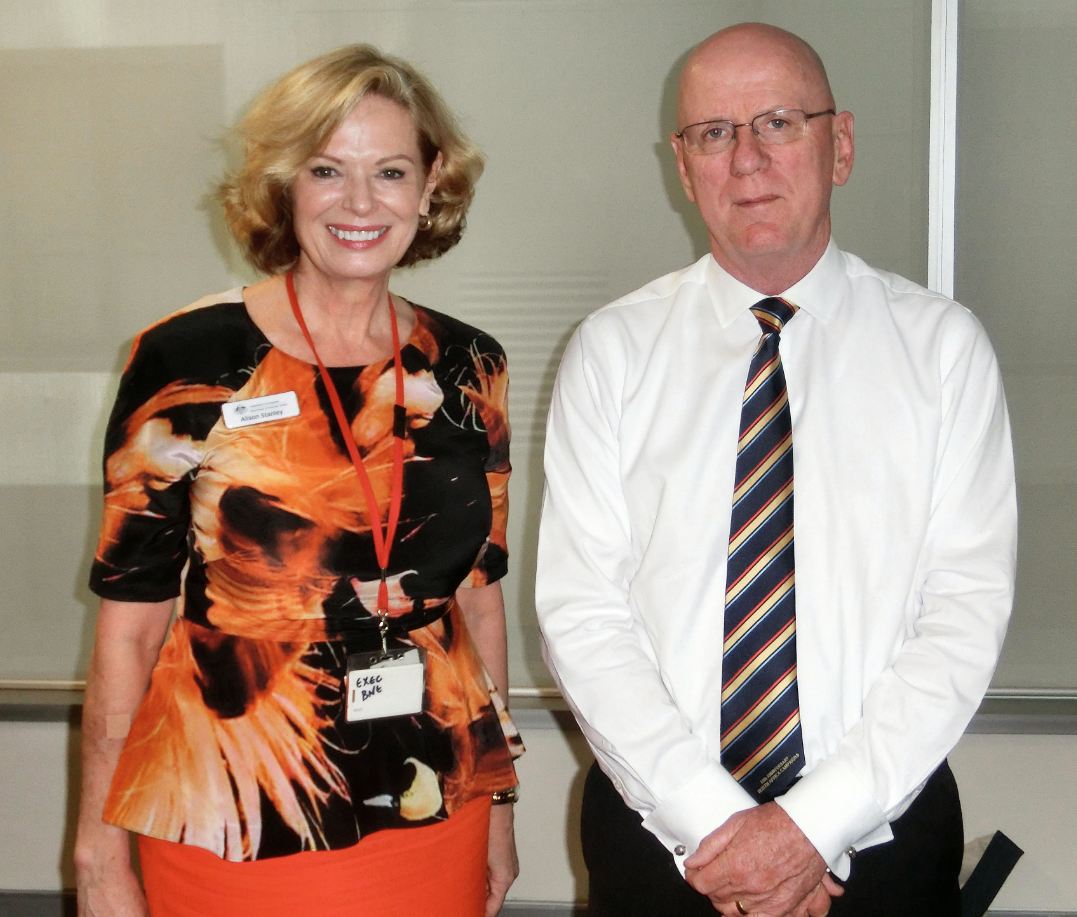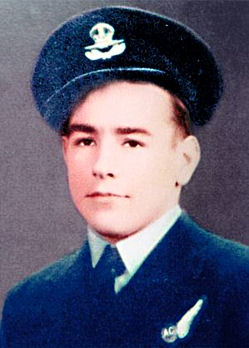|
|
|
Radschool Association Magazine - Vol 42 Page 14 |
|
Privacy Policy | Editorial Policy | Profit Policy | Join the Association | List of Members | Contact us | Index | Links |
|
Back Go to page: 1 2 3 4 5 6 7 8 9 10 11 12 13 14 15 16 17 18 19 20 Forward |
|
|
|
DVA Queensland Christmas Party.
On the 14th December, the Queensland “Branch” of the Department of Veterans Affairs held its annual Christmas get together, hosted once again by the Qld Deputy Commissioner, Alison Stanley.
Click most of the pics for a bigger/clearer view
|
|
|
|
Alison has worked in the Department of Veterans’ Affairs for many years and has been the much respected and admired Deputy Commissioner for Queensland for the past five years. Appreciated by both her staff and Ex Service Organisations (ESO) alike, Alison always makes herself available to listen to and help Ex and Serving members of the ADF and continuously gives up a huge amount of her own precious free time to attend as many functions/memorials/reunions held by ESO’s as she possibly can.
Alison is helped by a dedicated, helpful and loyal staff and we might be biased here, but those of us that live in Queensland all reckon the Qld “Branch” of DVA is the best in the Country.
|
|
Alison’s special guest at the Christmas Party was Ian Campbell, PSM (above).
Ian has an Economics Honours Degree from the University of New South Wales and started his APS career with the Department of the Treasury in the early 1970’s. Since then he has worked in the Communications, Health, Housing and Community Services, Employment and Education and Training Departments. From early 2000 until mid 2005, he was the Deputy President of the Repatriation Commission, then from July 2005 until September 2008 he was the Australian Electoral Commissioner.
In January 2008, Ian was awarded the Public Service Medal (PSM) for “Outstanding Public Service in the administration of electoral processes in Australia and in the development and implementation of improved entitlements for Australia's veteran community”.
The PSM recognises outstanding service by employees of the Australian Government and state, territory and local government employees. ‘Outstanding service’ could be shown through:
In 2008, he was appointed the Secretary of the Department of Veterans’ Affairs and President of the Repatriation Commission and Military Rehabilitation and Compensation Commission, a position he holds today.
On behalf of the DVA, Ian welcomed everyone to the function and spoke on the Department’s new initiative - MyAccount.
MyAccount is a quick, simple and secure way of accessing the Department’s services. It is very easy to join, is regularly updated and if you have or will have future dealings with the DVA it is well advised that you join now.
MyAccount provides a more immediate way of interacting with the Department, giving access to services anytime and anywhere. All you need is a computer and an internet connection then once registered you can
More services will be available and on line in the future
You can join by clicking HERE or by ringing 1800 173 858 during business hours, Monday to Friday.
DVA have produced a video explaining MyAccount – you can see it HERE.
The Department of Veterans’ Affairs employs around 2000 staff throughout Australia and has offices in each state and territory capital. It also has 26 smaller regional offices known as Veteran’ Affairs Network (VAN) offices and a lot of ex-service people would be completely lost without the wonderful services provided by the DVA.
Seen at the ‘get together’ were:
|
Kylie Gibb and John “Sambo” Sambrooks.
|
Kylie has been with the DVA for a number of years and is the person responsible for arranging all your transport needs. Should you need to see a GP or specialist, or perhaps spend a day or so in Hospital, Klylie is the one who makes sure transport arrives at your front door to get you there, and when you’re ready to go home, she organises that too.Sambo is the Secretary of the RTFV/35 Sqn Association.(Sambo has RTFV-35Sqn Shirts and T-Shirts available, you can get one HERE)
|
|
Rosie Forster, Robert Chester-Master, Rosemary Coleman.
|
|
Rosie Forster is the President of the WRAAF Association, Queensland Branch, Robert Chester-Master is the chairman of the Brisbane branch of the Air Crew Association (see story later) and Rosemary Coleman is the Secretary of the Qld WRAAF Association.
Robert might be getting on a bit but he still has an eye for pretty girls.
|
|
A husband is someone who, after taking the rubbish out to the bin, gives the impression that he just cleaned the whole house.
|
|
John McDougall, Julie McPhail, John Griffiths - MBE.
|
|
John McDougall, the President of the RTFV-35Sqn Association, started his RAAF career as a Sumpie Brat but got sick of getting his hands dirty working on the old Caribou so he put on the white shirt and tie and swapped the 1/2 - 9/16 ring spanner for the rag spanner and became a loady. Julie McPhail, (who was Julie Crane back in her WRAAF days) is the Secretary of the RSL (Qld) State Council of Auxiliaries and Wng Cdr John Griffiths, who once upon a time used to drive Caribous, Hercs and any other aircraft to which the RAAF tossed him the keys, is currently the RAAF’s Director for Performance Evaluation for the Australian Air Force Cadets.
|
|
|
|
Lorraine Harris-Bale and Trev Benneworth
|
|
Apart from being an excellent hostess, Lorraine looks after the Learning and Development area where Vets and current serving members can get much needed Rehab assistance.
|
|
Scientific fact!
If you took all the veins from your body and laid them end to end, you would die.
|
|
Robert joined the RAAF at the end of 1942, having just turned 18, but he was not inducted until Jan 1943. His first station was Kingaroy then he was selected for Pilot Training on Tigers at Narromine – west of Dubbo. After passing the Tiger stage, he was posted to Bundaberg to train on the Avro Anson. All was going well for the first 4 weeks but then the RAAF dropped a bomb. Robert and 3 other blokes, all of whom were a bit shorter than their mates, were pulled and sent to gunnery school at Evans Head – a huge disappoint for them all.
At the time the RAAF had more pilot trainees than they could handle and not enough gunners and as it was in the middle of WW2, there was no time to worry about a blokes’ feelings – so, orders being orders, off he and his mates went.
They were trained on Fairey
Battles and after 3 weeks he eventually became a Sgt Air Gunner. With
the half wing on his uniform, not the full wing he was expecting, he was
told to report to Melbourne for shipment to the UK via the
Then came the biggest shock of all, he was told that being a ‘little bloke’ he was perfectly suited for the rear gunner’s job, so it was into the back end of the Lancaster he went and from then on he was to watch the world go by through a 10mm thick Perspex window. He says: “The rear turret was the coldest, most isolated part of the aircraft. When we were flying at height, (about 15,000ft) it was minus 30 to 40 degrees. I wore three pairs of socks, electrically heated slippers, then my flying boots. On my hands I would have three pairs of gloves, electrically heated gloves and a gauntlet. On my body, I had the battle dress uniform then had what we called an inner and over – that would be an electrically heated suit and then another outfit which we euphemistically called the 'woolly bull' because it was thick and heavy”. You can just imagine how agile they were with all that stuff on.
His crew of 7 blokes received a mission to night bomb a factory which made the wings for the German V1 buzz bomb. After blasting the factory to bits, they were on their way home when they were met by a German night fighter which attacked. Roberts says he could hear the shudder of bullets into the aircraft but “when he broke away, he gave me the opportunity to pour my load of lead into his underbelly. He caught fire and went down in flames."
But the German had done his job too and the Lancaster was going down also and, in what seems like only a matter of minutes the pilot gave the order to bail out.
Bailing out from the rear turret of a Lancaster is not an easy job, especially at night and when the aircraft is not flying nice and level for you. The rear turret is too small for the inhabitant to wear his parachute so it was normally stored just outside the turret doors, inside the aircraft. When the order came to bail out, Robert had to reach behind himself, open the turret door, undo his oxygen supply and connection leads, wiggle backwards, grab the parachute, put it on then work his way forward to jump through the floor hatch. Trying doing all this in the pitch dark with all that gear on and the aircraft leaping all over the place - not an easy job.
But the self-preservation urge within us is very strong and Robert managed to get out but by then the aircraft had dropped to 1,000ft. His parachute had just enough time to open and slow his fall before he hit the ground hard, fracturing his left foot.
All his mates escaped, except for the pilot, a New Zealander named John Lawrie, who stayed with the aircraft and kept it as steady as possible while the others jumped. Robert said, "It wasn't until many years later that I found out the John didn't get out and it wasn't until 1992 that I found his grave (in the Antwerp military cemetery in Belgium),"
A local farmer discovered Robert hiding in a haystack and surviving on a couple of painkillers and it wasn't long before the Compete Resistance Movement gave him a set of fraudulent documents and had him in hiding in the German-occupied city of Brussels where he stayed until the war ended.
In 1975, Robert and his wife Margaret returned to Belgium and knocked on the door of a woman he knew as Suzanne. He said, "She was the niece of my main helper and used to work with the underground by riding bikes and taking messages”, I said: 'Hello Suzanne'. and she just looked at me and I said, 'It's Robert." He breaks down as he remembers the emotional reunion that saw 30 former resistance fighters converge on the small semi-detached house within the hour.
"After the Germans had been pushed well back (from Brussels), the authorities then put a broadcast through (the city) to the effect that if there was anybody who had escaped or was in hiding to report to the Hotel Metropol, where they had set up their headquarters," he recalls. "At the time of that first call there were over 500 escapees and invaders in hiding."
Every year in October, the city of Brussels remembers the efforts of the Compete Resistance Movement during World War II. Robert, now in his 80’s says, It is the people of Brussels to whom this Australian gives thanks every day. "I owe them my life," he says, "These people took great risks, showed great courage, because nobody in the village knew who to trust."
He has kept in close contact with his helpers, visiting Brussels nine times over the years and was invited back to unveil a plaque in honour of the 60th anniversary of the crash in the village of Bavegem. It was during this visit that one of the patriots presented him with a tiny cross made out of perspex.
It had been carved from a piece of the rear turret of his Lancaster bomber all those years ago. "This lady came out from this little group and gave me a small tin and said, 'These are parts from your aircraft — take them home for your memories'." He was also presented with the Belgium Cross of Bravery and Fidelity
In 2005, he was awarded the Order of Australia Medal for his service to the community.
He has written of his "Belgium interlude" in the book Against The Odds, which features a collection of 31 escape stories told by members of the Royal Australian Air Force. He also is a member of the Caterpillar Club, the Air Force Escaping Society, the Normandy Veterans Association and is chairman of the Brisbane branch of the Air Crew Association.
You can hear an interview with Robert undertaken by the Brisbane Courier Mail HERE.
A remarkable man.
|
|
Exaggeration is a billion times worse than understatement
|
|
CARNIVAL credit to ex Service personnel.
Carnival Australia, the group that represents three home-ported brands in Australia - Carnival Cruise Lines, P&O Cruises and Princess Cruises, has introduced a new program onboard its fleet to pay tribute to serving and former members of the Australian (ADF) and New Zealand Defence Forces (NZDF).
Under
the program, all Defence Force personnel including discharged and
retired servicemen will receive an on-b
The program is eligible to all three branches of the Defence Force. Carnival Australia Senior Vice President Jenny Lourey said the company was extremely proud to introduce the program.
“We think it’s a great way of acknowledging the men and women who give so much for their countries,” she said.
To receive the benefit, servicemen simply need to provide documentation at the time of booking, demonstrating their service in the Australian or New Zealand Defence Forces.
Once you have made your booking, either through a travel agent, on Carnival’s website or via Carnival’s contact centre, your name, booking number, ship and sailing date, with proof of eligibility as outlined HERE, should be emailed to defencebenefits@carnivalaustralia.com no later than two weeks prior to sailing.
|
|
Instead of calling it the John, I'm going to call my toilet the Jim, that way I can say I go to the Jim every morning
|
|
Back Go to page: 1 2 3 4 5 6 7 8 9 10 11 12 13 14 15 16 17 18 19 20 Forward |




